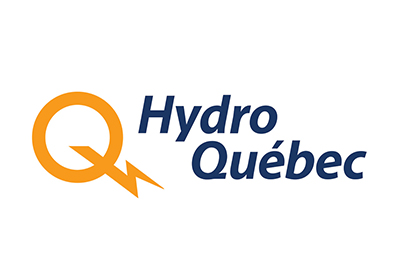Hydro-Québec’s Net Income up $633 million or 35% for First Nine Months of 2021

November 12, 2021
Hydro-Québec posted net income of $2,441 million for the first three quarters of 2021, or $633 million more than the $1,808 million recorded for the same period in 2020. This increase is mainly due to a $244-million rise in net electricity sales in Québec, a jump of $118 million in net exports and a $153-million decline in financial expenses.
“Contrary to last year, when the pandemic had a strong impact on our results, we continue to post an excellent financial performance quarter after quarter in 2021,” commented Jean-Hugues Lafleur, Executive Vice President and Chief Financial Officer of Hydro-Québec. “As a case in point, our net income for the third quarter has more than doubled compared to the same quarter in 2020. In addition, thanks to the efforts of our entire staff, we recorded a historic volume of net electricity sales across all our markets for the first nine months of the year.”
Highlights of the first nine months
- Québec market:
- Increase in electricity demand from all customer segments
- Warmer temperatures in spring 2021
- More than 3°C higher in April
- Markets outside Québec:
- Strong volume of net exports: 27.8 TWh
- Volume growth of nearly 20%
- Average price obtained: 4.0¢/kWh
- Strong volume of net exports: 27.8 TWh
- Investments:
- Investments in property, plant and equipment and intangible assets throughout Québec up more than $700 million
- Significant increase in investments allocated to asset sustainment and improvement
- Investments in property, plant and equipment and intangible assets throughout Québec up more than $700 million
- Financing:
- Issuance of fixed-rate bonds maturing in 2060 at an average cost of 2.69%, bringing total proceeds raised since the start of the year to $2.1 billion
On the Québec market, net electricity sales were up by $244 million compared to the first nine months of 2020 on account of a $239-million rise in electricity sales. Baseload demand from business customers grew with the gradual resumption of economic activities as public health measures were eased. An increase in aluminum prices, which have an impact on revenue from special contracts with certain large industrial customers, also led to higher electricity sales in Québec. These factors were partially offset, however, by the impact of warmer temperatures in spring 2021, especially in April.
On markets outside Québec, net electricity exports rose by $118 million, essentially because of volume growth of 4.5 TWh due, in part, to greater needs on external markets, where demand had dropped at the beginning of the pandemic last year. The company also took advantage of favorable market conditions arising in particular from the warmer temperatures in the second quarter to seize business opportunities. The net export volume thus remained strong, totaling 27.8 TWh, slightly below the record of 28.8 TWh set in the corresponding period of 2018.
Recognition of the other components of employee future benefit cost related to the Pension Plan yielded a positive variance of $185 million compared to the same period last year, partly as a result of an increase in the value of Plan assets.
Financial expenses decreased by $153 million, primarily because of the maturity of certain high-interest debts and the issuance of new debt at much lower rates, given the favorable conditions on the capital market.
Finally, Hydro-Québec invested $2,998 million in property, plant and equipment and intangible assets in the first nine months of 2021, compared to $2,263 million a year earlier, when the company’s jobsites had been strongly affected by the public health crisis. Work progressed on the Romaine-4 development, as did the projects aimed at ensuring the reliability and long-term operability of generation, transmission and distribution assets.









![Guide to the Canadian Electrical Code, Part 1[i] – A Road Map: Section 52 — Diagnostic imaging installations](https://electricalindustry.ca/wp-content/uploads/2022/11/Guide-CE-Code-2.png)






